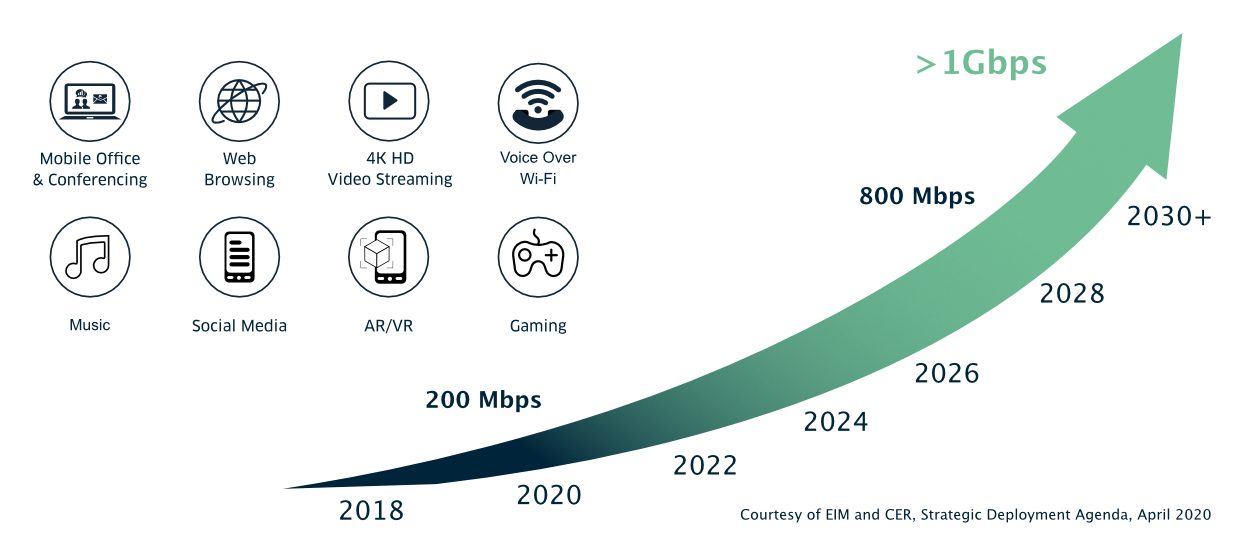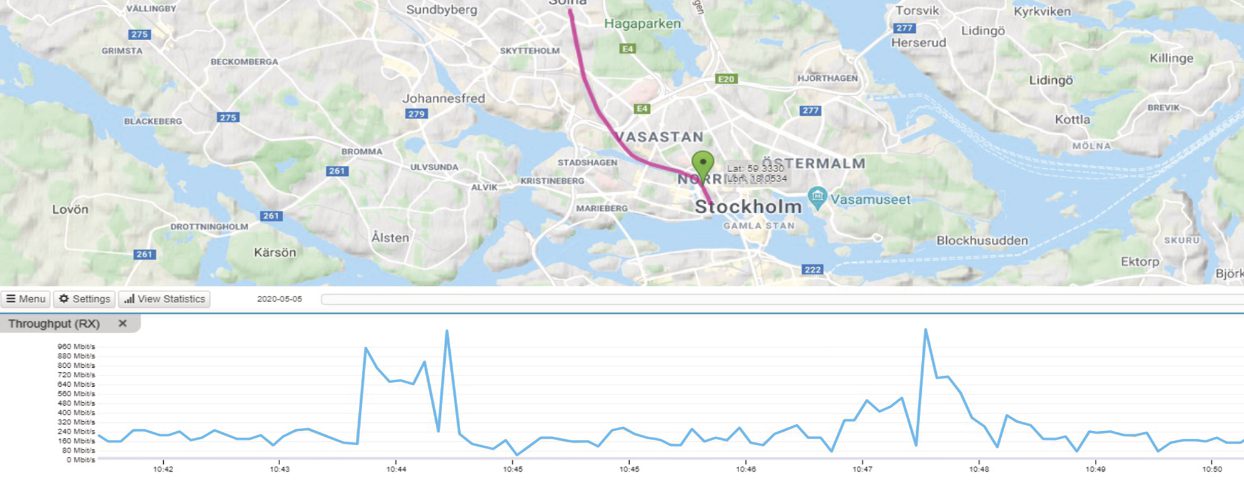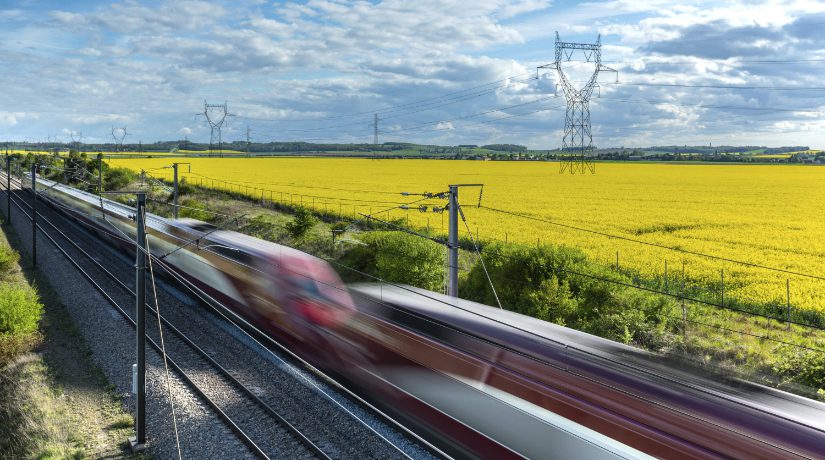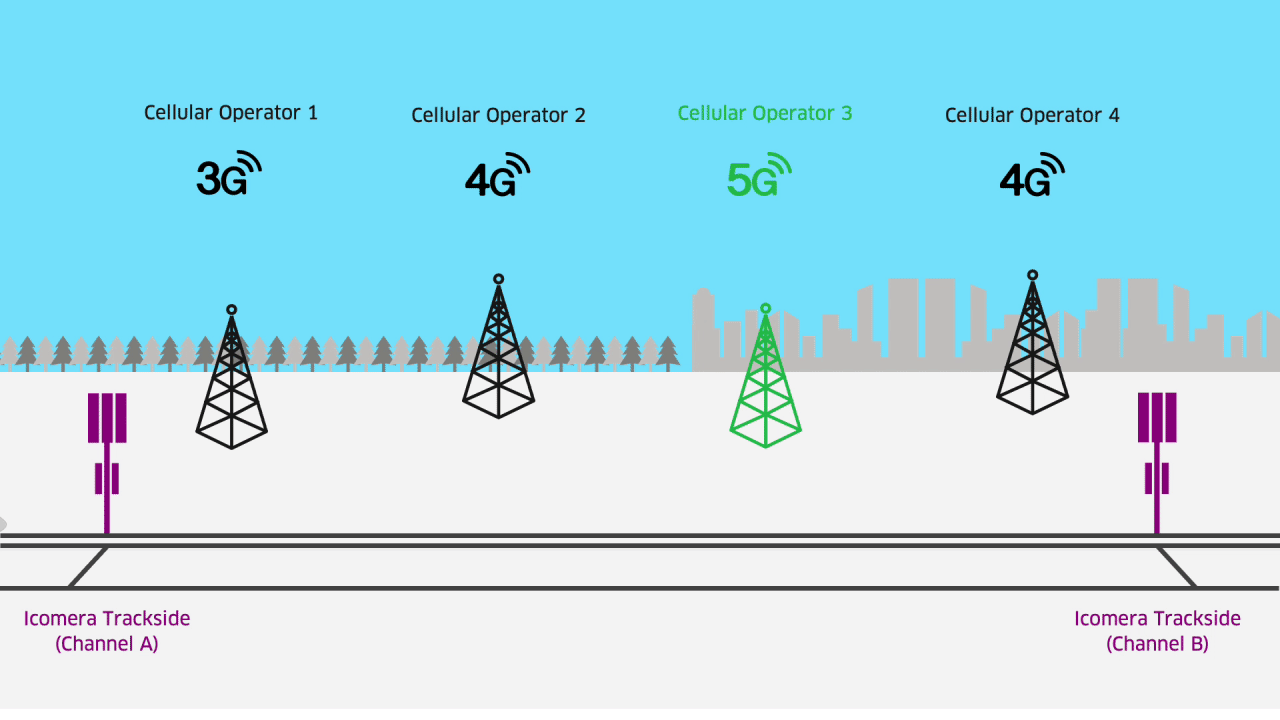With passengers demanding constant connections while they travel, and transport operators looking to leverage real-time operational data to and from their vehicles, there are an ever-increasing number of onboard devices and systems requiring connectivity. Ensuring that this connectivity is fast, reliable, robust and secure is key to assuring that the industry will be able to cater for the evolving needs of business and leisure commuters, as well as maintaining their safety.
The transport industry must deliver all this connectivity in a way which is both cost-efficient and resilient, and that allows it to adapt quickly based on shifting environmental, societal, and economic needs. It’s no good for the connectivity on offer to simply meet the requirements of today, only to become technologically redundant tomorrow (or in a year or two!) when necessities shift; undoubtedly, that would be a waste of time, budget, effort and resources, in a period when all of these must be treated with greater importance than ever.
Rather, any investment in connectivity now must confidently offer compatibility with future communication technologies as and when they arrive.
Then, transport operators will be able to take advantage of these new technologies while utilising their existing assets, future-proofing their connectivity over the long-term.
Traditionally, addressing the growing data-demands of the transport industry have raised two principal challenges:
-
- Passengers and onboard systems share the same finite bandwidth of the onboard Internet connectivity
- Connectivity needs to be available for the entire journey through rural and / or urban environments
But how can these connectivity challenges be overcome in the timescales required, and with the appropriate sense of urgency? In this article, we examine two approaches which transport operators would be diligent to consider – Link aggregation and trackside networks – But first let’s talk about cellular technology…
Maximising Value from Cellular Connectivity in Transport
Today, personal and commercial Internet connectivity on the move is largely delivered through cellular networks; however, in most countries, geographical patches of poor coverage and capacity mean that the stability and throughput of the Internet connection varies along a vehicle’s route, causing data packets to be delayed or lost. In real-world terms, for passengers this means slow webpage load times, video buffering, broken VPN tunnels and dropped conference calls; and, for transport operators, unreliable connectivity is a significant concern at a time when many onboard systems are becoming increasingly business critical.
With its promise of higher capacity, lower latency, and greater throughput than 4G networks, 5G is often touted as the cure-all. Indeed, 5G does provide several great opportunities for increasing data capacity on passenger transport; with more available spectrum, more advanced antenna technology, and more efficient routing from Mobile Network Operators (MNOs), 5G is able to deliver faster, more cost-efficient communications and increased network capacity and availability than was previously possible solely with 4G LTE networks.

However, it is far more fitting to think of 5G as being an upgrade rather than a total overhaul, or an “evolution, not a revolution”. Despite the advantages it brings, 5G is nonetheless still a cellular network, and therefore has the same challenges associated with previous generations of wireless communications technologies:
- Firstly, frequency limitations with 5G mean that coverage challenges will remain, when 5G alone is relied upon. The technology’s higher frequency RF bands, such as mmWave, are more designed for stationary environments and are thus generally not the best choice for most passenger transport connectivity use-cases (particularly where long, rural routes are concerned); 5G and 4G’s “Sub-2 GHz” frequencies will remain the most versatile options for delivering consistent connectivity along entire routes.
- Secondly, due to the CAPEX-constrained nature of cellular network development, it is likely that the full 5G rollout will still take quite some time, at least in some countries. Rural areas that some train routes pass through will be some of the last places to receive 5G.
Because 5G suffers from these limitations where passenger transport is concerned, transport operators should therefore adopt a wider connectivity strategy, selecting the right technologies that will make the most of 5G’s eventual benefits, while continuing to resolve the existing challenges of working with cellular technology.
The Efficiency of Link Aggregation
When it comes to cellular connectivity, using a “5G / LTE-hybrid” approach will remain the best way to maximise the effectiveness of existing coverage and capacity, plugging any gaps along the line, and delivering more consistent performance across both rural and urban environments in a cost-efficient manner.
To deliver this hybrid solution, transport operators can take advantage of existing link aggregation technologies, such as Icomera’s SureWAN™️ solution, phasing in the next generations of connectivity as they become available along a route.
Optimising aggregation helps deliver the fastest, most reliable connection possible and can involve various levels:
- Carrier Aggregation: Each modem in a router can aggregate all available radio frequencies from a single MNO along the route
- Dual-Connectivity: This feature allows each modem to utilise both 4G and 5G to improve network coverage and data rate
- MNO Aggregation: Each router can contain multiple carrier-aggregating modems, capturing all available capacity provided by all MNOs in the coverage area
- Multiple-router Aggregation: Multiple routers can be distributed along a vehicle (e.g across train carriages), aggregating capacity across different coverage areas
- MIMO Technology: Routers use “MIMO” (Multiple Input / Multiple Output) antenna technology. “Multiplexing MIMO” makes it possible to send and receive multiple signals along the same radio channel by using (typically) two or four antennas, increasing the capacity even further
Additionally, SD-WAN solutions such as SureWAN allow network traffic to be intelligently prioritised, throttled and / or blocked, as required; using this technology, transport operators can better manage their cellular data costs through efficient bandwidth usage, and prioritise their business-critical applications that need Internet access most (e.g. video surveillance systems or staff Wi-Fi over e.g. Passenger Wi-Fi).
In late 2020, the power of link aggregation technology was demonstrated in a real-world trial of Icomera’s 5G-enabled X5 router traveling on an SJ train on the Stockholm–Gothenburg route. In the trial, the X5 achieved a record-breaking throughput level, delivering over one gigabit of data per second, surpassing the benchmark referred to in the transport industry as “the Gigabit Train.”
Importantly, the X5’s backwards-compatible 5G modems also yield gigabit speeds when using only 4G LTE networks, thanks to “LTE CAT 20” technology, which allows for faster data transfer by aggregating up to seven “frequency carriers” at once. This means that transport operators can see substantial increases in throughput from existing networks, even before the rollout of 5G has been completed.

Designing and Implementing Dedicated Trackside Networks
Longer-term, transport infrastructure owners and operators looking to take greater control of their connectivity strategy will invest in dedicated broadband radio networks installed along the track. Trackside networks solve the existing connectivity challenges presented by cellular networks by ensuring high-bandwidth coverage along an entire route: Overground, underground, and in stations. Significantly, trackside solutions also offer several cost-efficiencies when compared to cellular-only solutions:
- The presence of pre-existing infrastructure, fibre, and power along the track can be used to reduce costs during the installation process
- Once constructed, these private networks offer greater capacity and better security at a lower cost when compared to purchasing data directly from MNOs
- Those who invest in private trackside networks will have the opportunity to create new revenue streams by licensing access to these dedicated networks to other transport operators wishing to share access
- Trackside solutions offer further cost savings using the “unlicensed” 5 GHz spectrum, delivering stable, high-bandwidth connectivity, with no need for additional licensing overheads
Conclusion
Combining Tools & Technologies to Deliver Optimal Connectivity
Looking ahead, with control and reliability remaining key measures of any good connectivity solution, well-integrated monitoring and management software tools will play a vital role too. Transport operators seeking to attain maximum value from their investment will take advantage of these tools to gain deep insights across multiple data streams simultaneously, proactively analyse and optimise their network performance, and mitigate against any potential issues at the earliest possible point.
Finally, despite the significant benefits that trackside technology offers, it should be noted that link aggregation will remain important in order to (i) manage the seamless handover in connectivity between trackside radios along a route, (ii) aggregate both trackside and cellular and / or satellite connectivity along stretches where both / all are available, (iii) offer fall-back to cellular networks / satellite connectivity if parts of the trackside network fail, or in areas where trackside networks have not yet been deployed for some reason.
By taking a hybrid approach and intelligently utilising a range of different connectivity technologies together in tandem, transport operators will be best placed to gain maximum value well into the future: Efficient link aggregation will continue to provide the means by which the full power of 5G and / or trackside technologies can be achieved where possible, while the next best available cellular or satellite connectivity can be achieved in those areas in which 5G and / or trackside networks are unavailable.
This article features in Icomera’s 48-page industry report “The Connected Journey Through Transport’s Transformative Decade”.
Supported by data and insights gathered from transport authorities, operators, and technology companies around the world, the report covers the trends and challenges shaping the future of passenger transport, and the role that connectivity will play in achieving the industry’s overarching goals…


